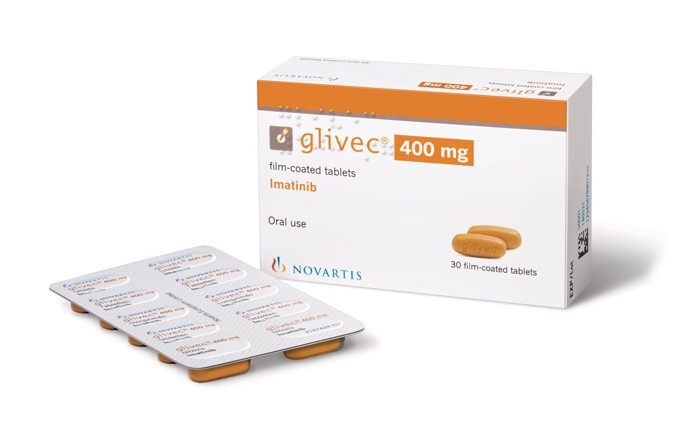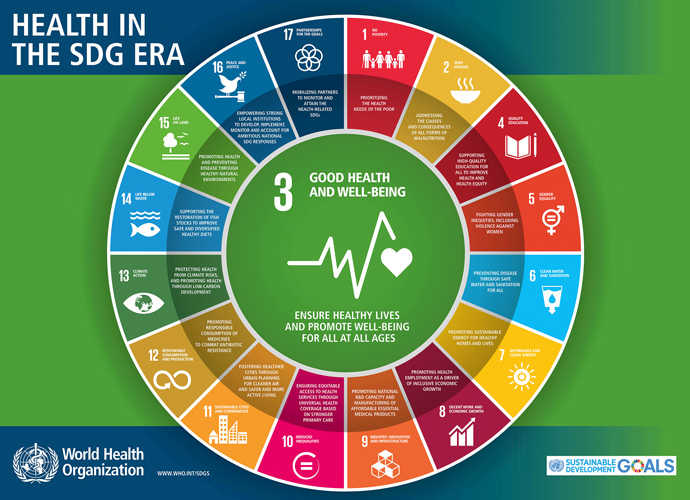Anyone who has driven a vehicle in Medellín or Bogota knows how important it is to yield to no one and seize every opening. If no opening presents itself, then jump out and create one.
That sort of outlook can be seen in a move by the Colombian government that some see as reckless and others see as pioneering.
In 2015, the Novartis oncology drug Glivec and its cousin formulation Gleevec led all company products in sales, at more than $4.6 billion, up five percent over 2014 sales and part of global “innovative medicines” sales of $33 billion, second only to Roche. In February 2016, however, the drugs — used to treat chronic myelogenous leukemia (CML) and other cancers — lost patent protection. The effect, like that of a powerful medicine, was immediate: an 11-percent drop in core operating income and a 3-percent drop in pharmaceutical net sales. The company’s strong portfolio and pipeline, plus an ongoing global corporate reorganization, have helped it overcome the blow so far.
But losing market share to generics is one thing. Losing the ability to price your own product is another.
That’s what happened this month, as the Colombia Ministry of Health, citing failure to reach an agreement with Novartis, issued a Declaration of Public Interest (DPI) in order to reduce the drug’s price. The action embodies the clashing dynamics involved in cultivating innovation and profit while also trying to cultivate affordable, accessible healthcare. Some of the decision’s effects have been immediate (dismay from big pharma, gratification from public health advocates) — and some may be of the sustained release variety (country reputation for doing business, healthy populace).
The declaration follows on a November 2014 request from the Drug Information Center of the National University (CIMUN) and IFARMA Mission Health Foundation, civic organizations that in May reiterated the need to fight what they called “enormous pressure from developed countries, from Big Pharma and even from Colombian trade authorities” trying to block the DPI via efforts they said were full of “inaccuracies, distortions of international trade rules and even threats of trade claims under the dispute settlement mechanism.”

According to the June 9 statement from Cartagena issued by Colombia’s Minister of Health and Social Protection Alejandro Gaviria Uribe, this means that, in principle, Novartis will maintain the exclusive right to market the drug, but must do so at a price that will be set by the National Price Commission for Drugs and Medical Devices formed by a representative of the Colombian Presidency and its ministers of health and trade. According to fact sheets available in Spanish only, the intention is that the new price “simulate a scenario of generic competition in the market” with an estimated price reduction that could be on the order of between 40 and 50 percent.
Glivec was denied a Colombian patent in 2003, but then was awarded one in 2012 giving it a virtual monopoly, according to some. According to background documents, in 2015, the price of Glivec per patient per year in Colombia was the equivalent of US$15,773, while its lower-cost competitor product’s cost was the equivalent of $3,064. In April, following a February announcement that it would move toward a DPI, but with open negotiations, the government proposed a price that Novartis rejected. The next stage of negotiations in late May and early this month ended in a fuzzy stalemate. According to a June 13th report in Life Sciences Intellectual Property Review, the current patent for Gleevec is valid until mid-2018 and the price of the drug per milligram is $44, while the government requested the price be reduced to $18.50. The report also said the drug is used by approximately 2,500 people in Colombia.
The View from Novartis
The ministry took pains to add that the decision came after two weeks of negotiations, and that the break in talks occurred on “gentlemanly” and friendly terms. Reactions from industry organizations, however, were decidedly not, though Novartis itself tried to maintain equilibrium:
“Novartis has been in discussions with the Colombian authorities around our Glivec patent,” said Novartis Oncology spokesperson Julie Masow in a statement emailed to Site Selection last week. “Throughout this dialogue we have remained fully committed to finding a resolution that benefits patients, innovators and the Colombian healthcare system. We have received no official confirmation from the Colombian authorities regarding the conclusion of these talks. Until we do, it is not appropriate to make further comment.”
Colombian Minister of Health Gaviria responded by email this week to questions from Site Selection. First, he was asked about the apparent belief by Novartis that no notification had been made of the conclusion of negotiations. His perception differed.
“We had our last meeting on June 7th,” says Minister Gaviria, who before his 2012 appointment served as a deputy director at Colombia’s Fedesarrollo (center for economic and social research), and as a researcher in Washington for the Inter-American Development Bank. “At the end of the meeting, we notified them that the negotiations were over, and that we’ll proceed to set the price unilaterally. The notification was very clear. We had a sincere and friendly exchange about it.”
Whether the Ministry of Health followed protocols of courtesy is difficult to determine. But Novartis did have further comments when it came to its position, if not the talks themselves:

“We have consistently said that Declarations of Public Interest can be important and legitimate tools to be used only in exceptional circumstances,” the company’s statement said. “This is simply not the case in Colombia. There are no shortages of Glivec or other access issues. Colombia’s universal healthcare system means all patients who need Glivec receive it. Novartis does not have a monopoly on imatinib. There are already non-infringing generic versions of imatinib on the market, which the government could purchase instead of Glivec in order to reduce its costs.”
Two weeks ago, Novartis issued similar comments when the option under consideration was a compulsory license, which would allow other entities to produce a patented product without the permission of the patent owner.
“Novartis is aware and sympathetic to the financial challenges faced by Colombia’s healthcare system,” the company said. “However, imposing a compulsory license on Glivec is simply not the solution. Novartis believes that compulsory licenses are important and legitimate tools to be used in exceptional circumstances such as public health crises, but should never be used to force price negotiations, as is the case here. This would create a damaging precedent that could apply to all patent-covered innovations — pharmaceutical or otherwise.
“In Colombia there is no shortage of Glivec or evidence of other access issues, the price is already subject to government controls and we don’t have a monopoly as multiple generics are already on the market,” the company continued. “The arbitrary disregard of patent rights damages industries which make huge investments in medicines such as Glivec, which has benefited millions of patients in Colombia, and worldwide.”
‘Disturbing’ and ‘Unprecedented’
Then came the shaming and scolding:
“Colombia has historically been among Latin America’s most innovation-friendly countries,” said Novartis. “Its authorities have upheld the view that patents benefit government, industry and patients alike. Since establishing a presence in Colombia in 1958, Novartis has helped improve and extend the lives of thousands of Colombians. Today, we are among Colombia’s leading healthcare companies with our operations managed by around 400 associates. We have also made major investments in Colombia, including clinical trials, building supply chains to ensure our medicines reach patients and educative programs for doctors and patients, which ultimately improve health outcomes.”
That was nothing compared to what issued from industry associations, who pulled out the rhetorical artillery.
“Yesterday, Colombia took another disturbing step that again calls into question its commitment to innovation, manufacturing and the type of investment climate that is vital to grow its economy,” wrote National Association of Manufacturers (NAM) Vice President of International Economic Affairs Linda Dempsey. “Colombia’s focus on imposing even more price controls is not only unnecessary, it is a threat to an innovative manufacturing environment that is vital for any country seeking economic growth, an improved standard of living and better jobs … Colombia’s unjustified actions are another severe warning that innovative manufacturing is not supported by Colombia and in fact is increasing[ly] at risk.”
“We are very disappointed that Colombia has decided to issue a Declaration of Public Interest as a prelude to imposing additional price cuts on a proven cancer medicine,” said Jay Taylor, vice president, International, for the Pharmaceutical Research and Manufacturers of America (PhRMA), citing the same list of reasons such a declaration was unnecessary. “Biopharmaceutical innovators support strong national health systems and timely access to quality, safe and effective medicines for patients who need them. Ad hoc price cuts are not effective or sustainable ways to improve access or achieve other critical public health goals. Pricing systems should be based on transparent rules and fair processes that provide business certainty for pharmaceutical innovators.”
“The issuance of a declaration of public interest as a mechanism to impose superfluous price controls sets a harmful global precedent,” Taylor continued, “undermining the incentives that enable high-risk research and development investments in life-saving medical innovation and a host of other cutting-edge industries.”
NAM’s Linda Dempsey said Colombia has “rejected its domestic and international commitments to the rule of law in several manufacturing sectors” over several years, and is thus “putting its reputation as a stable economy in which to do business at risk, particularly for innovative manufacturing that depends on fair treatment and property protection.” She also anticipated reactions to her reaction:
“We will surely hear compliments for Colombia’s actions among self-designated keepers of ‘public health’ who want it all for free and have never spent years, millions of dollars or hired one worker to create the new cures that the world is increasingly seeking. They will make false claims about an access problem that simply does not exist. And they will ignore the fact that the innovative life sciences sector not only supports millions of jobs, it [is] the necessary pipeline for the generic industry they so seem to favor. If actions like Colombia’s stand, we should indeed be worried about access to medicines and manufacturing jobs because it is precisely the innovative manufacturing sector that is on the front lines of creating life-saving solutions and disseminating those solutions around the world, all while sustaining and growing some of the most desirable jobs in our and other countries’ economies.”
The Minister Speaks
Glivec is produced at Novartis facilities in Ireland and Switzerland. Its story shows why it’s been such a valuable component of the Novartis portfolio. According to a history of the drug produced by the National Cancer Institute, prior to 2001, less than one in three chronic myelogenous leukemia (CML) patients survived five years past diagnosis. Then Glivec’s active ingredient imatinib was discovered and developed. A 2011 study concluded that CML patients whose disease is in remission after two years of imatinib treatment have the same life expectancy as those who never had the disease.
| Key indicators: Colombia | |
|---|---|
| WHO region | Americas |
| Child health | |
| Infants exclusively breastfed for the first six months of life (%) (2010) | 43 |
| Diphtheria tetanus toxoid and pertussis (DTP3) immunization coverage among 1-year-olds (%) (2014) | 90 |
| Demographic and socioeconomic statistics | |
| Poverty headcount ratio at $1.25 a day (PPP) (% of population) (2010) | 8.2 |
| Gender inequality index rank (2014) | 97 |
| Human development index rank (2014) | 97 |
| Health financing | |
| Total expenditure on health as a percentage of gross domestic product (2013) | 6.8 (Colombia note) |
| Private expenditure on health as a percentage of total expenditure on health (2013) | 24 (Colombia note) |
| General government expenditure on health as a percentage of total government expenditure (2013) | 16.1 (Colombia note) |
| Health systems | |
| Physicians density (per 1000 population) (2010) | 1.471 |
| Nursing and midwifery personnel density (per 1000 population) (2010) | 0.616 |
| Mortality and global health estimates | |
| Neonatal mortality rate (per 1000 live births) (2015) | 8.5 [5.7-13.2] |
| Under-five mortality rate (probability of dying by age 5 per 1000 live births) (2015) | 15.9 [10.9-23.7] |
| Maternal mortality ratio (per 100 000 live births) (2015) | 64 [ 56 – 81] |
| Public health and environment | |
| Population using improved drinking-water sources (%) (2015) | 91.4 (Total) |
| 96.8 (Urban) | |
| 73.8 (Rural) | |
| Population using improved sanitation facilities (%) (2015) | 85.2 (Urban) |
| 67.9 (Rural) | |
| 81.1 (Total) | |
| Sustainable development goals | |
| Life expectancy at birth (years) (2015) | 74.8 (Both sexes) |
| 71.2 (Male) | |
| 78.4 (Female) | |
| Births attended by skilled health personnel (%) (2013) | 98.7 |
| World Health Statistics | |
| Population (in thousands) total (2015) | 48228.7 |
| Literacy rate among adults aged >= 15 years (%) (2007-2012) | 94 |
Asked to respond to the assertion from Novartis that there were no shortages or access issues, and non-infringing generics could take up the slack in Colombia’s universal healthcare system, Gaviria says, “Colombia has indeed a universal healthcare system. But the system is in great financial distress as a result of high medicine prices and technological pressure. In addition, competition in the market is shaky as Novartis has blamed other generic competitors of patent infringement and could challenge the current generic competitors any time (they have been very outspoken about this). Sustainability of the healthcare system is probably the main public health concern in Colombia.”
In a still-standing 2008 position statement on competitive off-patent markets, Novartis said, “In efficient off-patent markets where medicines are available from multiple high quality sources prices should not be subject to regulation but result from competition in the market supported by appropriate incentives on the demand side. Off-patent brands should compete under the same rules.”
Some suggest that it comes down to patent language, as generics manufacturers can’t absolutely guarantee their products do not have the patented polymorphic form β in their versions of imatinib, or that a different polymorph will not convert to polymorphic form β under certain conditions. The generics are there, but are not in true competition with Glivec because of that patent.
To a non-scientist and non-lawyer, it may sound like saying, “No fair — you have LeBron James and we don’t, so this is an uncompetitive situation and we demand recourse.” Then again, this is life and death, not basketball. And emerging countries like Colombia — though they’ve reduced extreme poverty dramatically — see the competition to survive as a literal human endeavor, not a metaphor.
“This is the first time that such a declaration has been issued in Colombia,” Gaviria says. “The government used an exceptional but legitimate tool to ensure the sustainability of the system.”
Gone Too Far
In a December 2014 essay for the International Monetary Fund publication Finance and Development, Gaviria made the case that the price of medicines was threatening the progress of his country’s health reforms, which began in 1993. The country’s universal healthcare system now covers 97 percent of citizens with the same benefits, he wrote, “guarantees access to new technologies to the poorest segments of the population, and has reduced out-of-pocket expenses more than any other developing country.”
One example he offered of his country’s evolution: In 1993, 30 percent of Colombians from the poorest fifth of the population reported no access to health care in case of serious illness. Twenty years later this percentage had fallen to 3 percent. Today more than 20 million people, half the population, receive fully subsidized health insurance from the state.
But new and expensive medicines have put heavy pressure on that progress, Gaviria wrote, as public funds were on the hook for ever more expensive new medicines not included in benefits packages covered by insurers. Even as greater involvement of the private sector had influenced the system positively through increased efficiency and, initially, lower costs, those costs soon skyrocketed.
“Pharmaceutical companies, providers and doctors quickly realized that the state was willing to pay for almost everything (at almost any price),” Gaviria wrote. “Payments for new medicines increased and financial problems mounted. Debts with providers grew rapidly. And public confidence in the system deteriorated. What’s more, these developments reduced the egalitarian aspect of the reforms.”


In fact, he wrote, “Paying for the technologies not included in package of benefits turned out to be quite regressive.” In 2012, “Less than 1 percent of total payments went to individuals in the poorest 20 percent, while 40 percent went to individuals in the top quintile — who have better information and more access to specialists than do poorer people. In theory the access is the same for all. In practice it is not. It is difficult to imagine a more regressive use of public money.”
Attempts to implement regulations to smooth out those bumps have been opposed by industry. And in the case of Novartis, direct negotiations appeared to go nowhere. So the unprecedented DPI was issued.
The University of Antioquia in Medellin is among the bright lights of life sciences innovation and R&D in Colombia. In response to an inquiry from Site Selection, Dr Álvaro Franco Giraldo, the Dean of the National Public Health Faculty, part of the university, responded in Spanish with a statement titled “Appropriation of Technological Innovation vs. Right to Life and Public Health.” In it, the dean referred to Colombia’s status as a signatory to the WTO agreement on Trade-Related Aspects of Intellectual Property Rights and Trade (TRIPS). The country since 1995 has granted 20-year patents on new or pioneering drugs that meet patentability requirements such as novelty, inventive improvements and industrial application.
The patent gives the holder the right to exploit the market for those 20 years. In practice, he and others say, it has resulted in the freedom to price drugs at such exceedingly high levels that their cost invites not just scrutiny, but action.
“When such abuses in the prices of medicines are presented, the intervention of a health authority that somehow mediates between the legitimate right of the patent owner to obtain an economic benefit and the possibility of the general population to access a particular drug is necessary,” writes the dean (translation by Site Selection). But in fact, WTO member countries are usually reluctant to implement mechanisms that the TRIPS agreement makes available — compulsory licenses or parallel imports — because of what amounts to economic bullying by the leaders of big pharma.
In the case of Glivec, he writes, the drug is used in 90 percent of cases of CMS in Colombia. And its price point is, he says, “too high,” bringing us to the fundamental question of a right to a reasonable profit vs. a right to earn what he calls “astronomical” figures. In fact, he says, the whole idea of patents as the most appropriate mechanism to stimulate scientific innovation is now in question, especially in the drug arena, because whereas patents used to encourage increased availability of new drugs for humanity, now the opposite is occurring, with a sequence of expensive drugs becoming “totally inaccessible to billions of people.”
“In this vein, would not it be more logical also from the perspective of global justice that the costs of innovation in medicines be assumed by the rich countries?” he asks.
Competition Killer, or Visionary?
Asked how he can now persuade corporations who belong to such organizations as the National Association of Manufacturers and PhRMA that the Colombian government is not stifling innovation and R&D, Gaviria says, “We have a permanent and productive relationship with the industry. Over the last few years they have greatly expanded their operations in Colombia. They have (in a good sense) taken advantage of the rapid movement of Colombia towards universal healthcare coverage. They publicly acknowledge that the sustainability of the Colombian health system is in their best interest.”
As for reaction to his ministry’s decision from other corners of the world besides the United States, he says, “Reactions have been similar. We want to continue working with the industry. We have a common agenda. And they know that the global environment is changing and that abusive prices are no longer tolerated.”
Asked to put Colombia’s action in a global context, André Guedel, an expert in site selection for life sciences companies in Europe and the head of sales and business development at KPMG Tax Switzerland, says in an email, “Regulating drug prices [has existed] across Europe for a long time. However, there is currently a movement away from reference pricing and toward value-based pricing, which would be a big change for industry.”
Indeed, Rand Corp. last year embarked on a study of pharmaceutical pricing approaches in Canada, France, Germany, Italy, the Netherlands and Spain in order to help guide the UK’s approach to the same thorny issue. And various states such as California are considering laws that may force companies to publish information related to the development, R&D, clinical trials and promotional costs of drugs marked by exceedingly high annual price tags (such as $10,000 a year or more).

As for the impact of such actions on location decision-making by corporations, KPMG’s Guedel adds, “The product price which can be achieved is indeed a factor which plays a significant role in the decision to entering a market. In terms of attracting investments, however, other factors like flexibility of labor law, effective corporate tax rate, availability of work force and size of the industry cluster are equally important factors for investment decisions. Potential investors into Colombia have to perform an analysis of their value chain to determine which functions, assets and risks should be located in Colombia, and how they relate to the profits generated in this country.”

